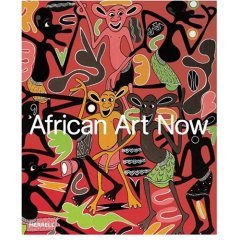آیا کتاب را خواندهاید؟
میخواهم بخوانم
در حال خواندن
خواندم
آیا کتاب را دوست داشتید؟
دوست داشتم
دوست نداشتم
African Art Now: Masterpieces From the Jean Pigozzi Collection
امتیاز محصول:
(هنوز کسی امتیاز نداده است)
دسته بندی:
History Of Art
ویژگیهای محصول:
کد کالا:
141347
شابک:
9780890902950
انتشارات:
موضوع:
History Of Art
سال انتشار:
2015
جلد:
Paperback
طول:
28.702
عرض:
23.876
ارتفاع:
1.778
وزن:
1247 گرم
قیمت محصول:
850,000 ریال
موجود نیست
درباره African Art Now: Masterpieces From the Jean Pigozzi Collection:
From Publishers Weekly
Starred Review. The Contemporary African Art Collection-which is essentially run by only two guys, Italian collector Jean Pigozzi and French curator André Magnin-has managed to make some people very angry. Is it not the worst sort of cultural colonialism, detractors ask, for two white Westerners to define what contemporary African art is, especially when their collection consists almost exclusively of self-taught artists? But, as they make clear in the interviews included here, Pigozzi and Magnin make no claim to do anything other than present artists they love, and it is their idiosyncratic tastes that make this catalog (which is being published in conjunction with an exhibit at the Museum of Fine Arts in Houston) such a surprise and a pleasure. The surprise comes from the sheer scope of inventiveness and variety on display: from the spare, ominous watercolors of Barthélémy Toguo (from Cameroon) to the surrealistic allegories Cheri Samba (of Congo) paints in a slick, commercial art style. Some of the artists produce work at a polar extreme from the scruffy, homemade look one might expect from "outsider" artists: Rigobert Nimi of Congo uses scavenged materials to build gleaming, precisely rendered models of spaceships and robot factories, and Abu Bockari Mansaray of Sierra Leone draws maniacally detailed diagrams of such devices as a "Nuclear Telephone Discovered in Hell." If there is any flaw in this presentation of an explosively imaginative group of artists (33 of them in all, from 14 countries), it is that, with only two or three images for each artist, it feels far too short. Still, for open-minded readers more interested in art itself than what Pigozzi calls "intellectual art gossip," this is a book to linger over and absorb slowly, one intoxicating vision at a time.





